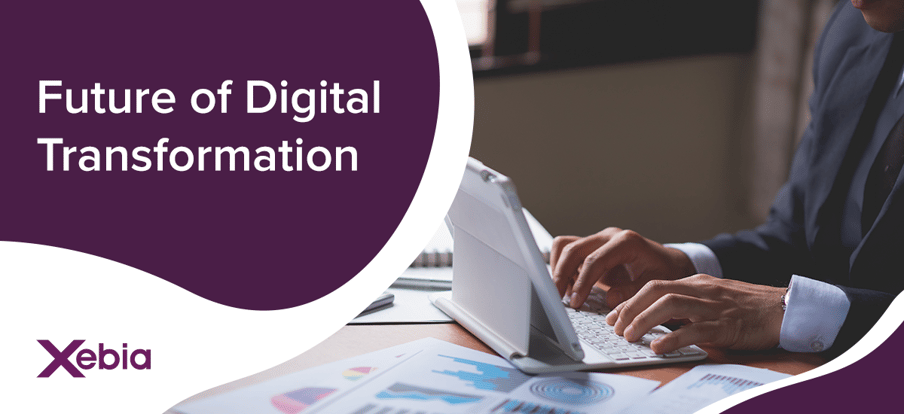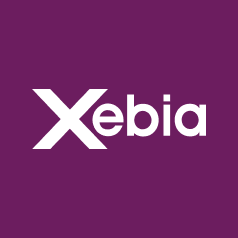Business Reporter stated last year – digital transformation is no longer an inward tactic used to reform an organization’s operations. Instead, it’s a necessary undertaking sought out by CIOs and IT leaders.
Statistics confirm this statement. Reports show that digitally mature companies are 23% more profitable than their less mature peers. Moreover, 56% of CEOs say digital improvements have increased their revenue.
Considering all that, it’s only natural to assume that the digital transformation will keep playing a pivotal role in shaping the modern business landscape.
How, exactly? In this article, we’re looking for the answer ⬇

What Is Digital Transformation and Why Is It Important?
But before we start, let’s first establish what digital transformation is.
If you work in IT, or simply work in management, digital transformation is a term that crops up at most meetings. Forbes alone had 148,811 results on the topic of digital transformation a few years back already. Yet “digital transformation” on its own means nothing. It’s not a buzzword – much like Industry 4.0, it’s shorthand for a much larger, more complex concept.
But what concept, exactly?
Shortly speaking, digital transformation is the process wherein a company embraces new digital solutions to open up new benefits or eliminate older problems.
Digital Future - Digital Transformation Trends and Predictions
Spending on digital transformation technologies is expected to reach $1.8 trillion in 2022. This gigantic number shouldn’t come as a surprise.
As a result of the COVID-19 pandemic, the speed of digital transformation has reached an unprecedented level. More and more technologies are empowering enterprises to open up new business opportunities and possibilities. The array of technological options is wide; it includes trends like Artificial Intelligence (AI), Deep Learning (DL), Robotic Process Automation (RPA), and more.
Let’s consider them in some more detail.
Software 2.0
Software 2.0 is a fascinating concept. It aims to create source code automatically from a requirements document.
This futuristic idea is made possible thanks to Deep Learning that helps create neural networks for automating code drafting.
From a more practical perspective, Deep Learning starts with a training phase, during which a neural network is fed with a top of data for it to learn how to classify singular elements. Next, during the Prediction Stage, Deep Learning can create a final product, empowered by what it learned during training.
As for today, Software 2.0 is still in the early stages of its existence. One of the main challenges of this technology is the need for high data quality and the efficiency and accuracy of data analytics activities. However, even considering the current limitations, Software 2.0 is a fascinating concept, having the potential to transform how digitalization is approached in smaller organizations, that don’t have huge, skilled IT departments.
No-code Artificial Intelligence (No-code AI)
Usually, utilizing AI requires data science competences. Yet, with no-code Artificial Intelligence, companies can rely on AI without advanced technological skills.
Many no-code platforms offer easy-to-use, visual drag-and-drop tools. Currently, the main challenge related to these tools is the need for at least some coding competencies since most of the basic tools don’t fully support no-code artificial intelligence.
But this doesn’t mean that no-code AI is only a thing of the future. Even today, by migrating to a more sophisticated eAutoML platform, you can enjoy true no-code, end-to-end automation. And considering that Artificial Intelligence remains a strong pillar of the entire digital transformation, being the most used and often the most useful, an intuitive, convenient tool, usable by anyone, clearly has the potential to elevate the digitalization to new heights.
Artificial Intelligence of Things (AIoT)
If you’ve never seen this term before, you might have thought if we misspelled it somehow. But no – AIoT is a hybrid od Artificial Intelligence and the Internet of Things. It opens up a new perspective on Machine Learning. Together, AI and IoT offer niche capabilities that deliver different possibilities than when leveraged separately.
Some use-cases for AIoT include self-optimizing supply chain systems, cyber-physical systems and automated regulatory inspections that leverage drone technologies.
As the next step in the evolution of IoT, AI, and ML, this hybrid technology can have a huge impact on the expanding digital landscape.
How to Achieve Digital Transformation Success?
But regardless of the trends and predictions, if companies will be looking to embrace digital transformation even further, there are a few key elements they’ll need to keep in mind to succeed.
Understanding What Digital Business Is
One of the key prerequisites of making a digital transformation successful (or rather – of making ANY endeavour successful) is understanding what you’re aiming to achieve.
In case of digital transformation, the ultimate goal is embodying the idea of a digital business.
According to Cognizant, digital business is the process of applying digital technology to reinvent business models and transform a company’s products and customer experiences. The purpose is to create new value and connect people with insights and experiences.
A digital business enables a company to better engage its customers by:
- reinventing the interactions with customers, employees, and partners,
- creating disruptive business models,
- envisioning and building innovative products, services, and experiences,
- developing go-to-market approaches.
As a result, businesses get empowered to generate new growth, meaningful differentiation, and measurable economic value.
Plan Your Own Digital Transformation
DX provides an unparallel potential to advance and improve your entire business. Starting from upgrading internal operations and delivering better experiences to end-to-end users, it has the power to transform enterprises and drive substantial revenue streams.
And the longer you wait with starting your digital transformation, the more benefits can keep slipping through your fingers.
Maybe it’s worth considering your options today?





